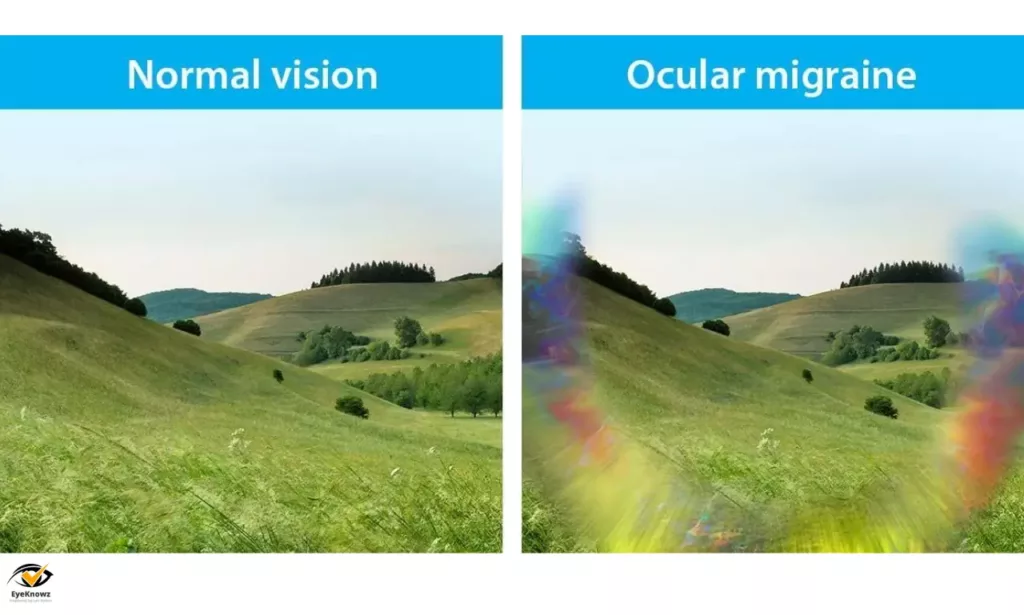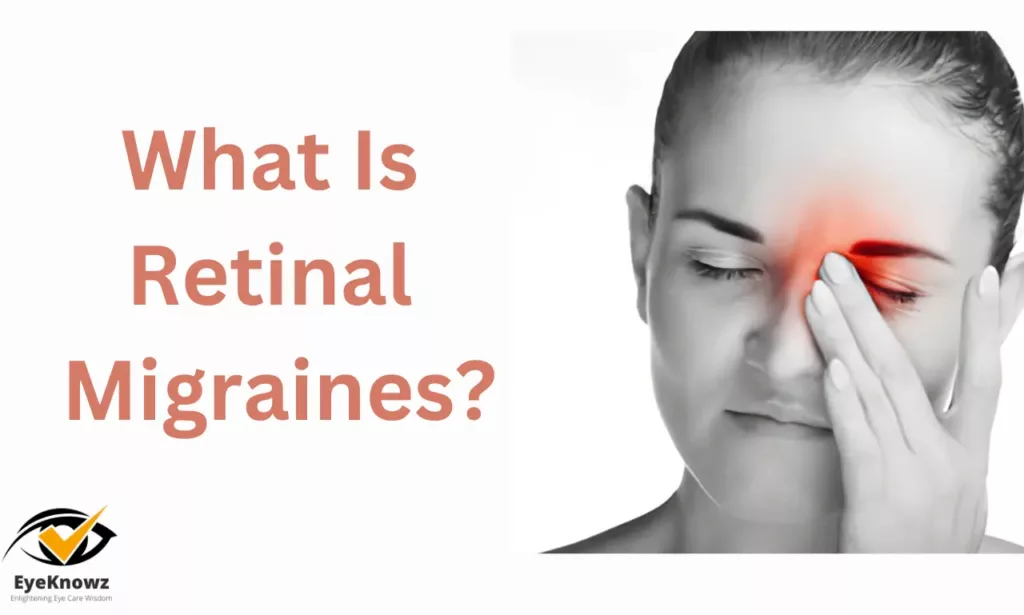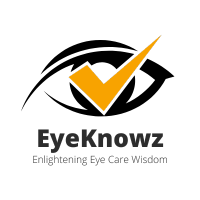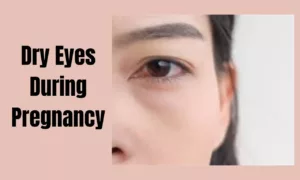Sometimes, you often experience extreme and recurrent headache episodes that you don’t know are caused by. There are different reasons behind these headaches, one of which might be retinal migraines. But how can you figure out if retinal migraine is causing you problems, or is it any other reason? Well, this article explains it all. Here, we will talk about retinal migraine in detail, its causes, prevention, treatment, and much more. Keep reading to know it all!
What is a retinal migraine?
Retinal migraines is a condition that causes recurrent blurred vision in one eye. These disorders include partial vision loss, sparkling and flickering lights, and blindness. Headache also appears at the same time as the visual disturbance or within an hour. The duration of these symptoms ranges from 5 to 60 minutes. No specific data are available on the prevalence of retinal migraines, but experts believe it is a rare form. You can either experience retinal migraine in both eyes or in one eye only. This article will discuss in detail whether retinal migraines are dangerous and how to manage them.
Ocular Migraine and Retinal Migraine
Retinal migraine vs ocular migraine: They have a lot of symptoms in common. Doctors may call an ocular migraine a retinal migraine. The exact cause of retinal migraine is still unknown. According to some experts, it may be due to constriction of the veins or arteries of the eye. Another possibility is that the family history or genetics of retinal migraines can also cause retinal problems. People with retinal migraine may experience triggers similar to those seen in migraine with aura.
Common triggering factors are:
- high blood pressure
- Stress
- exercise
- altitude increase
- excessive heat
- hormonal contraceptives
- hypoglycemia
- dehydration
The following people are at higher risk of developing retinal migraine than others:
- Family or personal history of migraine
- Woman
- Other conditions like epilepsy, sickle cell anaemia, atherosclerosis, or lupus
- Age between 30-39
Symptoms
Retinal migraines are recurring visual disturbances, or auras, that affect one eye. Retinal migraine symptoms include:
- partial vision loss or blind spot
- twinkling or flashing lights
- temporary blindness
A migraine headache can occur within 60 minutes of the onset of visual symptoms. Migraines can cause symptoms such as:
- Moderate to severe pain intensity
- High pulse or beat
- Aggravated by activities like climbing or walking
Migraines can also cause:
- Increased sensitivity to light
- Vomiting and nausea
- Increased intolerance to noise
Diagnosis
No diagnostic tests are required to diagnose retinal migraine. Instead, doctors usually diagnose people with this condition according to ICHD-3 criteria guidelines. Diagnostic criteria for retinal migraine include:
A person must meet this criteria for migraine-equivalent attacks with aura. It affects only one eye, with or without obvious symptoms such as visual impairment or blindness. Aura should have at least two of the following symptoms:
- Headache starting within 60 minutes
- Sequential distribution of 5 or more
- Symptoms that have a duration of 5 to 60 minutes
- In addition to examining the person’s symptoms, the doctor may also discuss the person’s or family’s migraine history.
In some cases, a specialist may need to make sure that stroke or eye diseases are not causing the symptoms. Some people with vision problems have hemianopia. It is the vision loss in half the visual field, either including one or both eyes. The possible cause of this condition might be a traumatic brain injury or stroke.
Treatment
How to treat retinal migraine? Treatment usually includes pain relievers and avoidance of triggers. The drugs a doctor prescribes to treat retinal migraines depend on the frequency of migraine episodes and the person’s age. Medications may include NSAIDs like ibuprofen and aspirin for treating inflammation and pain. Anti-nausea drugs are also effective for preventing vomiting and nausea. Ergotamines and triptans are also advised for migraines, except for retinal migraines.
Devices to help with Ocular Migraine

There are also different devices available in the market that are helpful in treating ocular migraine symptoms. The sTMS mini is a stimulation device that involves magnetic pulses to activate brain regions; for using this device properly, whenever you expect a headache symptom, keep this device at the posterior region of your head. This will help in relieving the symptoms. Another device used for treating ocular migraines is the Nerivio. It has a neuromodulatory working and a wireless remote functioning. As soon as you start experiencing headaches, wear this device on your upper arm.
Next comes the Ceflays, which is the most convenient device for treating ocular migraines. It is like a portable headband and must be used once a day for about 20 minutes. It is helpful in the stimulation of the nerves that might cause migraine headaches by giving electrical impulses to the forehead region. Another device called the gammaCore is also responsible for stimulating the vagus nerve. This is a non-invasive device that uses electrical stimulation to prevent migraine.
Is ocular migraine a minor stroke?
Ocular migraine is not a minor stroke. These are different conditions. However, stroke can cause visual disturbances similar to migraines. For this reason, it is important to see a doctor if you notice sudden vision changes. Symptoms of stroke are:
Paralysis or weakness on one side.
- Dysarthria or slurred speech
- Loss of senses (hearing, taste, sight, smell, touch)
- Loss of coordination
- Vomiting and nausea
- Difficulty speaking or aphasia
- Loss of facial muscle control
- Clumsiness or ataxia
- Dizziness
- Stiff neck
Prevention
The strategies for the prevention of regular and retinal migraines are the same. These lifestyle changes and medications can help improve the patient’s condition.
- Take all prophylaxis as directed.
- Avoid known triggers such as stress, food, and environmental factors
- Maintain record to check and track additional triggers
Preventive medicines include:
- Anticonvulsants
- Blood vessel relaxing agents such as beta-blocker
- Tricyclic antidepressants
- Lifestyle changes are:
- Do not consume caffeine, alcohol
- Avoid smoking
- Manage hypertension
- Avoid using oral contraceptives
Conclusion
This was all about retinal migraines. We have also discussed how to get rid of a retinal migraine and the management of this condition. Hopefully, now you can figure out if your headache is associated with migraine or if it is something else. For the best diagnosis, it is recommended to visit an expert healthcare professional.
FAQs
When should I see a doctor about ocular migraines?
You should get regular eye exams to maintain your eye health. When you start experiencing the symptoms, visit your healthcare professional. If the symptoms worsen, follow the complete treatment regime to avoid brain or eye disorders.
What are the complications of retinal migraine?
Retinal migraines can lead to permanent vision loss in rare cases. People experiencing vision problems due to retinal migraines should visit an ophthalmologist. This will help in figuring out any underlying issues or eye damage.
What are the retinal migraine lasting days?
Retinal migraine can last from a few hours to about two weeks.






